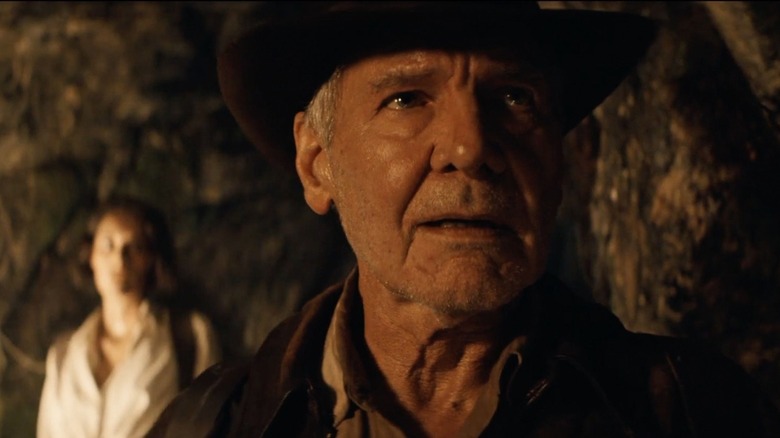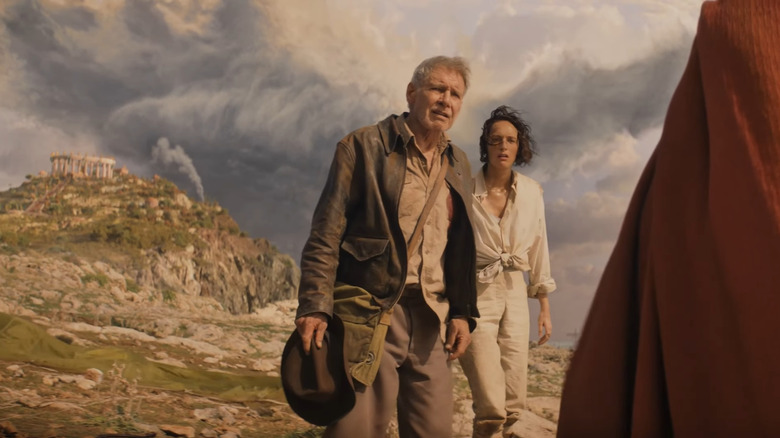Director James Mangold Finally Explains That Wild Indiana Jones 5 Ending
Indiana Jones returned to our screens earlier this year after a 15-year absence with "Dial of Destiny," a movie Lex Briscuso called "an action-packed, high-octane super soaker of a film, while at the same time amounting to a beautiful final conquest and farewell" in her review for /Film. The film ignores all the bad parts of "Kingdom of the Crystal Skull" (even poor Mutt) and has a cool sort-of crossover with "For All Mankind" in Mads Mikkelsen's character.
The biggest surprise of the film, however, is its big third-act moment. Following the wrath of God, a Templar ghost doing riddles, and literal aliens is no small feat. And yet, "Dial of Destiny" goes big and bold in its grand finale, which makes it one of the best sci-fi movies of the year.
The scene, of course, sees Indiana and his goddaughter Helena travel back in time to ancient Greece — specifically the Siege of Syracuse in 212 BC. It is a truly crazy final act, and it totally rules. We get Roman siege weapons shooting down a Nazi plane, believing it to be a dragon. We get Indy meeting Archimedes himself. We even get a reveal that Archimedes devised a plan to bring in help from the future to defeat the Romans.
Speaking with io9, director James Mangold talked about the many different versions of the ending that almost were. "When I came on the movie, they had been playing with a bunch of different things which were basically just reduxes of what had happened in the first movie," he said. "In a way, I didn't want to do the kind of 'Is it a Death Star again?'"
Back in time with James Mangold
For Mangold, the key was in Indiana's age, and how it informed the character as a hero of a bygone era, which in turn informed the plot starting in the past. "When we did start writing, it was my theory that at first that we would end up back in Nazi Germany in 1938," Mangold continued. Given that the movie opens in Germany during the war, going back to that time makes sense in a "Back to the Future 2" kind of way. Except, as Mangold explains, the audience is already anticipating that, and it would mean just repeating the opening of the film "with a 79-year-old Indy running around."
The solution, according to Mangold, was to go with something "more shocking, something bolder, and something that also affected Indy." Going back in time to Nazi Germany would be more about Mads Mikkelsen's Voller and his goals than Indy himself. Instead, by bringing everyone's favorite archeologist back to Ancient Greece, a place he spent the entire movie talking about, the stakes become personal. He'd be facing "bigger questions about his own life and what he studied all his life" according to Mangold. The result is a poignant send-off for Indiana, an ending that is about him facing a personal challenge rather than the villain getting punished. Surprisingly enough it is similar to another recent blockbuster about an old man facing a changed world.

